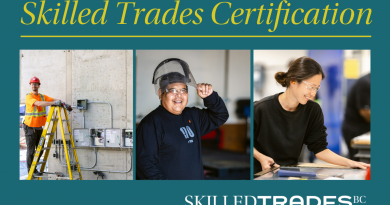Guide 5069 – Temporary Public Policy: Temporary Resident to Permanent Resident Pathway (TR to PR)
Tell us the place they last entered Canada (for example, Toronto airport, Lacolle border crossing, seaport Yarmouth).
Select the box to tell us if your dependant has lived in any country other than their country of citizenship or their current country of residence for more than 6 months in the past 5 years.
If you checked “Yes,”
- select the name of the country your dependant lived in from the list
- select your dependant’s immigration status for the time they were in that country:
- Citizen
- Permanent resident
- Visitor
- Worker
- Student
- Other
- Protected Person
- Refugee Claimant
- Foreign National
- Other: This section must be completed if you selected “Other” as a status
- fill in the dates (From – To) your dependant was living in that country
- From the list, select your dependant’s current marital status:
- Annulled Marriage
- Common-Law
- Divorced
- Legally Separated
- Married
- Single
- Widowed
- Enter the date (year, month and day) your dependant was married or entered into their current common-law relationship.
- Tell us the family name(s) and given name(s) of your dependant’s current spouse or common-law partner.
- Family name(s)
- Given name(s)
- Type of relationship:
- Common-law or
- Married
- Dates (From – To) your dependant was in the relationship with their previous spouse or common-law partner
Passport
- Question 1
- Select the box to tell us if your dependant has a valid passport or travel document. If they don’t have one or can’t obtain one, you must select the “No” box.
- Question 2
- If you selected “Yes,” provide their passport or travel document number exactly as shown on the document. Make sure there is no space between each number or letter.
- Question 3
- From the list, select the name of the country or territory that issued their passport or travel document.
- Question 4
- Enter the date their passport or travel document was issued.
- Question 5
- Enter the date their passport or travel document will expire.
- Question 6
- For this trip, select Yes or No to tell us if they’re using a passport issued by the Ministry of Foreign Affairs in Taiwan that shows their personal identification number.
- Question 7
- For this trip, select Yes or No to tell us if they’re using a National Israeli passport.
National Identity Document
- Question 1
- Select the box to tell us if your dependant has a valid national identity document.
- Question 2
- If you selected “Yes,” provide their national identity document number exactly as shown on the document. Make sure there is no space between each number or letter.
- Question 3
- From the list, select the name of the country or territory that issued their national identity document.
- Question 4
- Enter the date their national identity document was issued.
- Question 5
- Enter the date their national identity document will expire.
Education/Occupation Detail
- Question 1
- From the list, select your dependant’s highest level of education.
- None: No education
- Secondary or less: High school diploma obtained after elementary school and before college, university, or other formal training.
- Trade/Apprenticeship Certificate/Diploma: Diploma completed in a specific trade, such as carpentry or auto mechanics.
- Non-university Certificate/Diploma: Training in a profession that requires formal education but not at the university level (for example, dental technician or engineering technician).
- Post-Secondary – No Degree: Post-secondary studies at a college or university but no degree earned.
- Bachelor’s Degree: Academic degree awarded by a college or university to those who have completed an undergraduate curriculum; also called a baccalaureate. Examples include a Bachelor of Arts, Science or Education.
- Post Graduate – No Degree: Post-graduate studies at a college or university but no degree earned (Master or PhD).
- Master’s Degree: Academic degree awarded by a graduate school of a college or university. You must have completed a Bachelor’s degree before a Master’s degree can be earned.
- Doctorate – PhD: Highest university degree, usually based on at least 3 years of graduate studies and a thesis. Normally, you must have completed a Master’s degree before a PhD can be earned.
- Question 2
- Tell us the total number of years of formal education that they have completed, including elementary and secondary school.
- Question 3
- Tell us their current occupation.
- Question 4
- Tell us their intended occupation in Canada.
Language Detail
- Question 1
- This question is not for selection purposes. One of Canada’s immigration objectives is to support and assist the development of minority language communities in Canada.
- From the list, select your dependant’s first (native) language. This is the language that they learned at home during their childhood and they still understand. If their native language does not appear in this list, select “Other.”





